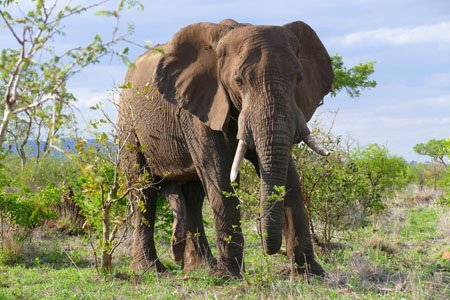- Series:Animals, God’s Design, Transcript English
Genesis 1:25
“And God made the beast of the earth after his kind, and cattle after their kind, and every thing that creepeth upon the earth after his kind: and God saw that it was good.”
 If I have occasion to visit a zoo, one enclosure that I really can’t miss is that of the elephants. These great beasts – the largest of all extant land mammals – are simply beautiful. Who can resist those large, floppy ears, the beady little eyes and, obviously, its distinctive trunk?
If I have occasion to visit a zoo, one enclosure that I really can’t miss is that of the elephants. These great beasts – the largest of all extant land mammals – are simply beautiful. Who can resist those large, floppy ears, the beady little eyes and, obviously, its distinctive trunk?
The trunk is an organ of manipulation. Elephants will pick up large objects with it, and the end of the trunk is delicate enough to handle quite small objects. We are also familiar with elephants using their trunks as hoses when bathing. There are three extant species of elephant (African Bush, African Forest, and Asian), but creationists and evolutionists alike recognize a number of extinct creatures, such as mammoths and mastodons, as being in the same family, or kind.
The elephant’s trunk contains over 100,000 muscle units. Yet evolutionists are happy to suggest that they have a common ancestor with hyraxes, dugongs and manatees. These animals do not have the same quantity of muscles in their noses, so the evolutionist has to explain from where did the elephant get its trunk. Rudyard Kipling’s famous Just So Stories suggests that a crocodile bit the end of the elephant child’s nose and stretched it. Evolutionary ideas are slightly more sophisticated, yet do not really read as much more involved than Kipling’s fantasy. An elephant’s trunk is so unique and so different from any other kind of animal that it speaks eloquently of design by the Creator.
Prayer: Thank You, Father, for the many wonderful beasts with which You have filled this world. Amen.
Author: Paul F. Taylor
Ref: Davis, B. (2016), Defining Species—An Elephant-Sized Problem, < https://answersingenesis.org/mammals/defining-species-elephant-sized-problem/ >, accessed 3/1/2019. Image: CC BY-SA 2.0 Generic.
© 2020 Creation Moments. All rights reserved.
